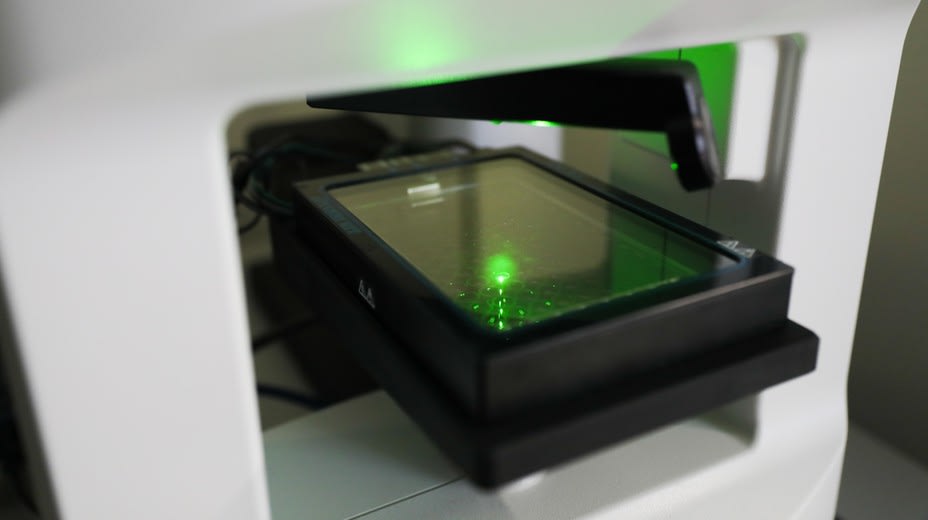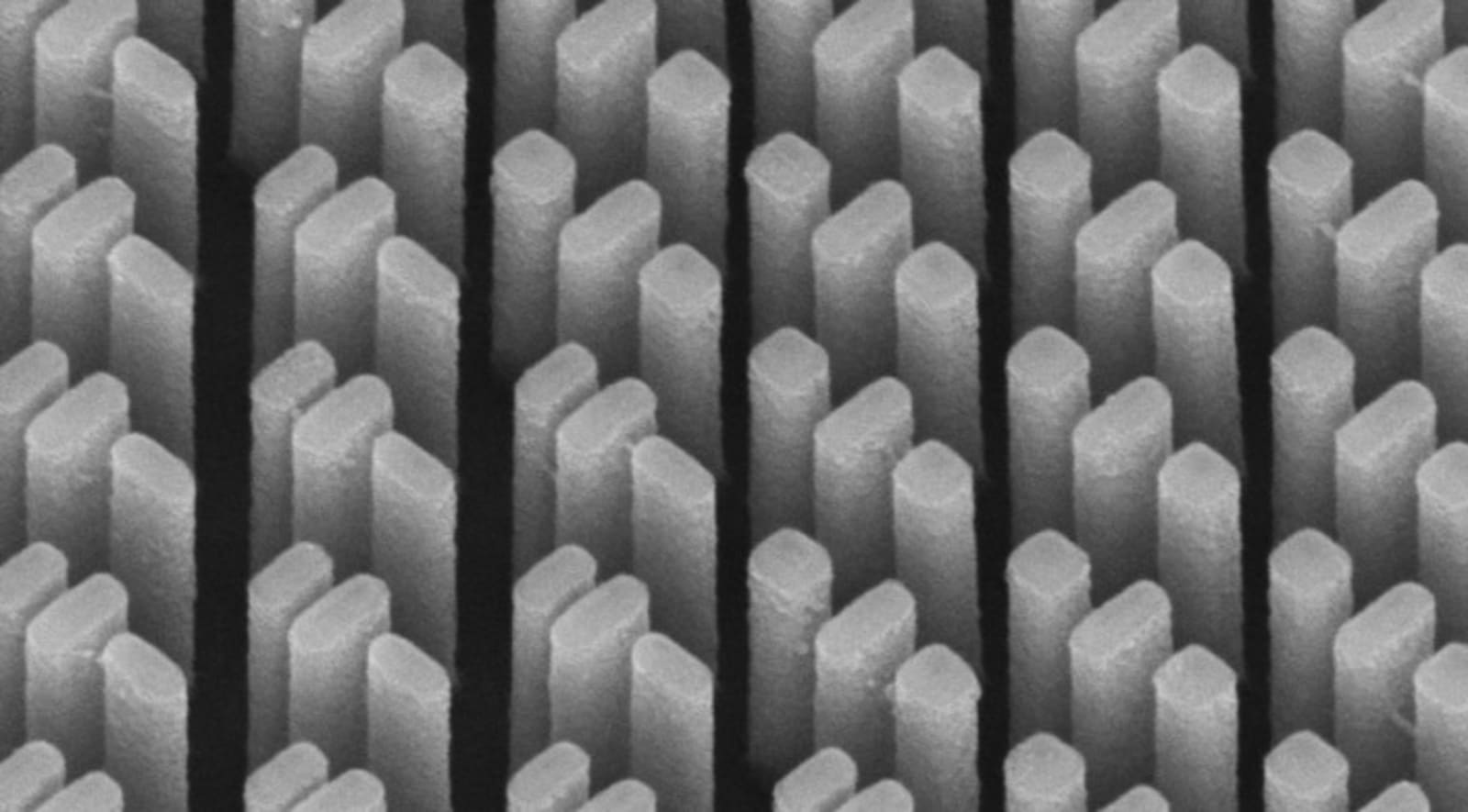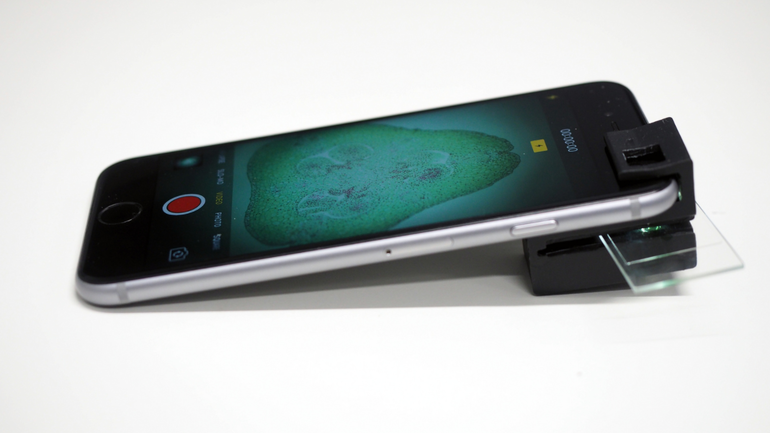Tag Archives: microscope
Diple Smartphone Microscope Review: A Bargain-Priced Optical Powerhouse
It’s pretty amazing what smartphone cameras are capable of these days. I used to carry around lots of camera gear to events, and with very few exceptions now, my iPhone 11 Pro Max is all I bring with me. Thanks to their impressive sharpness, resolution, and processing capabilities, these pocketable cameras have really changed the world of digital imagery. Now, there’s an impressive bit of gadgetry hitting the market that can transform your smartphone into a powerful microscope, right on your desktop.

Created by SmartMicroOptics, the Diple is a cost-effective and portable way to capture incredible microscopic images anytime, anywhere. With initial pricing as low as $49 and topping out around $155 with all of the bells and whistles, this compact microscope provides everything you need to shoot crisp and detailed images using any smartphone.
Depending on which kit you go with you’ll get either a standard stage, or an adjustable fine stage, along with one, two, or three objective lens “blades,” a backlight source, and two adjustable feet for stabilizing larger smartphones. They also toss in a some sample glass slides, a pipette, and a slide shifter. I recently got my hands on a prototype of the Diple microscope to see just what it is capable of.

The real secret sauce here are the interchangeable objective lenses, which come in 35x, 75x, and 150x magnifications, and can capture detail as small as 3, 1, or 0.7 microns, respectively. The level of detail you can capture can be further amplified by the zoom capabilities of your camera – so for instance, the 2X telephoto lens on my iPhone grabbed even closer imagery than the base 1x lens.

It takes a few steps to set up the Diple, but it’s pretty straightforward once you get the hang of it. Open up the box it came in, turn on the included LED light source, place the light into the foam-cushioned base, set the viewing stage on top, place the slide shifter, set your slide on top of it, then choose and place the objective lens you’d like to use. After that, set your camera’s lens directly on top of the objective lens, and you’re ready to capture incredible microscopic images.


Lining up your camera’s lens with the Diple objective lens takes a little practice too, but once you figure it out, it’s not too tricky – just look for the light. The lens blades each have a thumbscrew adjustment which lets you fine-tune the focus, and the included plastic slide shifter makes it easy to move your slide back and forth under the lens – at least in rough movements. If you need precision, you’ll definitely want to go for the fine version of the stage (shown here) which uses a pair of wheels to move the stage horizontally or vertically with much greater finesse than trying to do it by hand. When you’re talking about microscopic subject matter, even the tiniest movements can make a huge difference in locating what you’re looking for.

The gallery of unretouched images below show a few examples of items I captured with the Diple’s various lenses, including human blood cells, plant fibers, sugar crystals, animal hairs, and more.






I did encounter a couple of small frustrations with the prototype design of the Diple – neither of which is a deal-killer. First off, there is currently nothing in place to keep the stage from sliding off of its spot in the box while you line up your camera. This can result in the stage shifting off of the light source. This could easily be resolved if they added a rigid divider in the center of the box. Secondly, getting the lens blades to grip securely into the trio of plastic holders can be tricky. It’s a really tight fit, and if you need to lift it up to reposition your subject, it’s easy to accidentally pop it out of place. It would be great if there was a way to clip the blade into place and hinge it upwards, but that’s not the current design.

Images must be mounted onto glass slides to get the most out of the Diple, and in its main version, it can only capture objects which can be seen with backlighting. In order to capture opaque subjects, you’ll want to add on the Diple Lux, an optional bracket which allows for front lighting of subjects.

Overall, the Diple is an impressive tool for anyone who has an interest in biology or other sciences in which microscopic imagery is important. It’s easy to travel with, and provides a quick and easy way to view samples in the field. SmartMicroOptics has already blown through its crowdfunding goal for the Diple over on Kickstarter, and the campaign ends on 12/18/19, so you should move quick if you want to pre-order one for yourself.

The uHandy Duet lets your smartphone’s fancy camera click microscopic shots too
Telephoto, wide, and now ultra-wide… your phone has all these incredible lenses that let you shoot farther, or fit more into a frame, but uHandy lets your phone manage the opposite, and remarkably so! The uHandy Duet isn’t a macro lens… it’s a literal mobile-mounted microscope. You can zoom in on bugs, microorganism, even cells, to experience life on a scale that’s too small for the eye to see. Duet’s microscopes (there are two of them) attach to your phone, and use small sample-gathering stickers to collect everything you can find, be it hair, pollen, dust, or anything else you want to dive deep into.
A lower-intensity Lo-Mag lens allows you to observe small details like textures, or a butterfly’s wings, while the more powerful Hi-Mag lens lets you zoom in as much as 30x~200x to be able to view things or microorganisms as small as 1 micrometer (imagine being able to look at a small cluster of the transistors on the new iPhone’s chip!) The Hi-Mag lens uses its own light-source, and is roughly the size of a hockey-puck, giving you the ability to view literally an entire new world with your smartphone! The uHandy seems like a perfect toy to get kids curious about the micro-world around them, but truth be told, I’m probably just as eager to own one of these!
Designer: uHandy
Scientists unveil 3D microscope that visualizes cells without damaging them
 There's a problem in cell biology research: to study what happens inside a cell, it has to be destroyed. When scientists use a traditional microscope to observe a cell, they use stains -- chemicals that color parts of the cell to make them visible. H...
There's a problem in cell biology research: to study what happens inside a cell, it has to be destroyed. When scientists use a traditional microscope to observe a cell, they use stains -- chemicals that color parts of the cell to make them visible. H...
Researchers find a way to fix the purple halo effect in images
 While cameras and cutting-edge microscopes have come on leaps and bounds in recent years, the optical technology these kind of products use hasn't really changed since the mid-1700s. Even the highest spec gear relies on compound lenses, which were in...
While cameras and cutting-edge microscopes have come on leaps and bounds in recent years, the optical technology these kind of products use hasn't really changed since the mid-1700s. Even the highest spec gear relies on compound lenses, which were in...
Watching Asteroid Under a Microscope
Watching Asteroid Under a Microscope
Advanced microscope shows cells at work in incredible 3D detail
 For the first time, scientists have peered into living cells and created videos showing how they function with unprecedented 3D detail. Using a special microscope and new lighting techniques, a team from Harvard and the Howard Hughes Medical Institut...
For the first time, scientists have peered into living cells and created videos showing how they function with unprecedented 3D detail. Using a special microscope and new lighting techniques, a team from Harvard and the Howard Hughes Medical Institut...
Google made an AR microscope that can help detect cancer
 In a talk given today at the American Association for Cancer Research's annual meeting, Google researchers described a prototype of an augmented reality microscope that could be used to help physicians diagnose patients. When pathologists are analyzi...
In a talk given today at the American Association for Cancer Research's annual meeting, Google researchers described a prototype of an augmented reality microscope that could be used to help physicians diagnose patients. When pathologists are analyzi...
3D-printed smartphone microscope is good enough for scientists
 Your smartphone could soon be a fully functional microscope capable of examining samples as small as 1/200th of a millimeter. Australian researchers have developed a clip-on device that requires no external light or power sources to produce a clear p...
Your smartphone could soon be a fully functional microscope capable of examining samples as small as 1/200th of a millimeter. Australian researchers have developed a clip-on device that requires no external light or power sources to produce a clear p...











